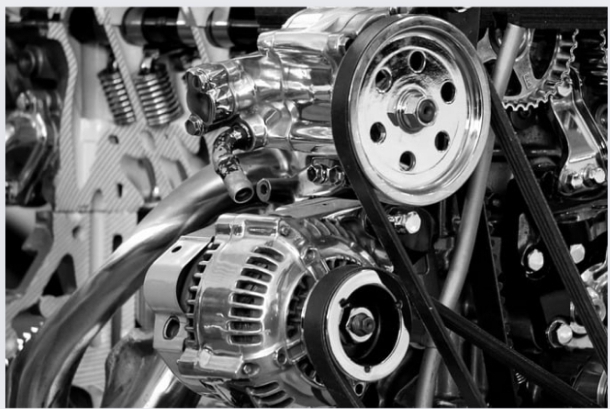Expensive And High Quality Nyt: With Full Details

Introduction
We’ve all been there—staring at a price tag and wondering, “Is this really worth it?” Expensive products often come with the promise of high quality, but how true is that? In this article, we’re diving deep into what makes products expensive, whether high cost truly equals Expensive And High Quality Nyt, how you can make informed decisions that won’t break the bank. Stick around as we unravel the mysteries behind those hefty price tags and whether you’re actually getting what you pay for.
Why Are Some Products So Expensive?
Ever wondered why some products come with jaw-dropping price tags? It’s not just about the cost of materials or labor; several factors contribute to the final price. Marketing, branding, and even perceived value play significant roles. When a brand builds a reputation for quality, they can charge more because consumers are willing to pay for that trust. But is that always justified?
Quality vs. Cost: Is It Worth It?
There’s a common belief that the higher the price, the better the quality. But is that really the case? Sometimes, you’re paying for the brand name rather than the product itself. Sure, a $300 pair of shoes might last longer than a $30 pair, but does that mean it’s ten times better? The relationship between cost and quality isn’t always linear, and it’s essential to recognize when you’re getting value for your money—or when you’re simply paying for a label.
Case Study: The Rolex Example
Take Rolex, for example. These watches are synonymous with luxury and have price tags to match. But what makes a Rolex so expensive? The answer lies in craftsmanship, materials, and brand heritage. Each Rolex watch is hand-assembled, made from high-quality materials like 18k gold or stainless steel, and undergoes rigorous testing. The result? A product that not only lasts a lifetime but also retains its value over time. In this case, the high price is directly tied to the quality and durability of the product.
The Perception of Value
Here’s where things get tricky. The perception of value varies from person to person. What one individual considers a reasonable price for quality, another might view as exorbitant. This perception is shaped by personal experiences, financial situation, and even cultural influences. Brands capitalize on this by positioning their products as status symbols, convincing consumers that they need to spend more to gain a sense of exclusivity and prestige.
Are High Prices Justified?
So, are these high prices always justified? The truth is, not always. Some products are marked up significantly due to branding rather than the intrinsic value they offer. Think about the last time you bought a piece of clothing simply because of the logo on it. Was the quality vastly superior to a no-name brand? In many cases, you’re paying for the name rather than the product itself. It’s crucial to recognize when a high price is a reflection of genuine quality and when it’s merely a marketing ploy.
The Role of Branding in Pricing
Branding plays a massive role in how products are priced. A strong brand can command higher prices because of the perceived value and trust it has built over time. For instance, the New York Times (NYT) is known for its high-quality journalism. While it’s more expensive than other news outlets, readers are willing to pay because they associate the brand with credibility and thorough reporting. But how much of that cost is for the content, and how much is for the brand name?
Case Study: New York Times High-Quality Content
The Expensive And High Quality Nyt is a prime example of branding done right. It’s not just a newspaper; it’s a brand that stands for quality journalism. The paper’s commitment to in-depth reporting and fact-checking means that it can charge more for its content. Readers are paying for more than just the articles—they’re paying for the trust and reliability that come with the NYT name. This case study illustrates how branding and perceived quality can justify higher prices, even in a competitive market.
How to Determine If a Product Is Worth the Price
Now that we’ve established that not all Expensive And High Quality Nyt products are worth their price, how can you determine if something is truly worth the cost? Start by evaluating the product’s longevity, material quality, and the reputation of the brand. Look for reviews and testimonials from other customers. If possible, compare it to similar products in the market. Sometimes, a less expensive item can offer the same or even better quality than its pricier counterpart.
Evaluating Quality Over Time
One of the best ways to assess whether a product is worth its price is to consider how it holds up over time. Does it deteriorate quickly, or does it maintain its quality with regular use? Products that age well and continue to perform long after the initial purchase are often worth the investment. On the other hand, if something shows signs of wear and tear shortly after purchase, it might not have been worth the high price tag.
Balancing Cost and Value
It’s all about balance. When evaluating a product, consider both the cost and the value it offers. Ask yourself if the higher price is justified by the benefits you’ll receive. For instance, investing in a high-quality kitchen appliance might seem costly upfront, but if it lasts for years and enhances your cooking experience, the value outweighs the cost. It’s about making informed decisions that prioritize long-term satisfaction over short-term savings.
Case Study: Investing in High-Quality Kitchen Appliances
Consider the investment in a high-quality kitchen appliance like a Vitamix blender. At first glance, the price might seem steep compared to other blenders. However, a Vitamix is known for its durability, versatility, and superior performance. It can handle everything from smoothies to soups, often replacing several other kitchen gadgets. Over time, the value it provides justifies the initial investment, making it a smart choice for those who want to invest in quality.
Conclusion
At the end of the day, Expensive And High Quality Nyt, doesn’t always mean better, but it can. The key is making informed decisions based on research, reviews, and personal needs. Whether you’re buying a luxury watch, a premium kitchen appliance, or subscribing to a high-quality news outlet, ensure that the value justifies the cost. By understanding the factors that drive up prices and recognizing when you’re paying for quality versus branding, you can make smarter purchasing decisions that offer long-term satisfaction.
FAQs
1. Why do some brands charge so much for their products?
Brands often charge high prices due to their reputation, the quality of materials used, and the craftsmanship involved in creating their products. Marketing and branding also play significant roles in justifying these costs.
2. Is there a difference between expensive and high-quality?
Yes, there is. While many expensive products are high-quality, the price doesn’t always guarantee better quality. Sometimes, you’re paying more for the brand name than the product itself.
3. Can I find high-quality products at lower prices?
Absolutely! Many brands offer high-quality products at more affordable prices. It’s all about doing your research, reading reviews, and not being swayed by branding alone.
4. How do I know if I’m getting a good deal?
To determine if you’re getting a good deal, compare the product to similar items in the market, read customer reviews, and consider the longevity and performance of the product.
5. Is expensive always better?
Not always. While some expensive products offer superior quality, others may not. It’s essential to assess each product individually to determine if the price is justified by the value it provides.





